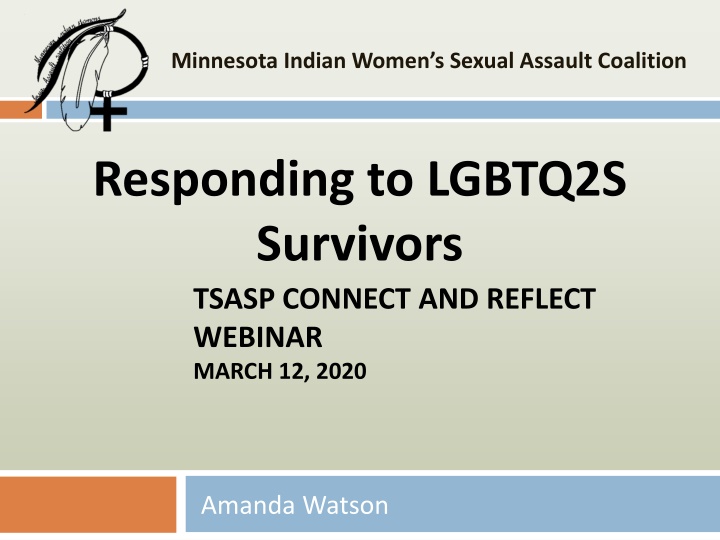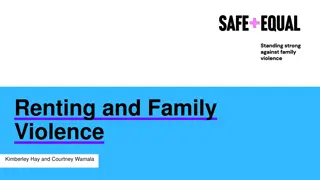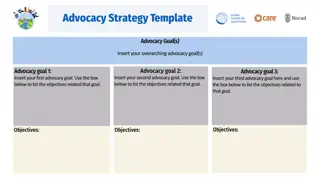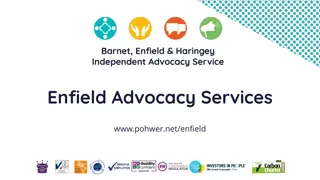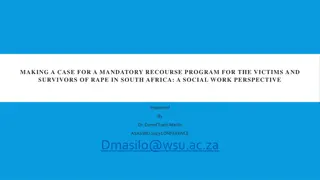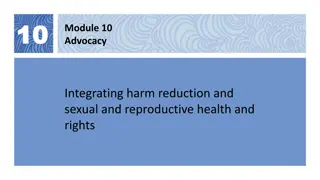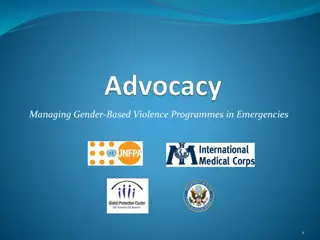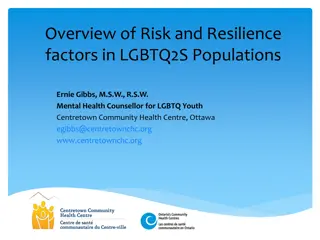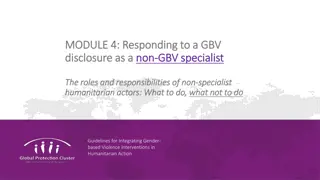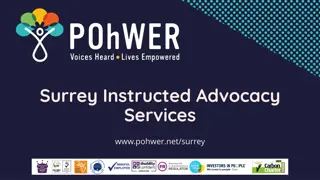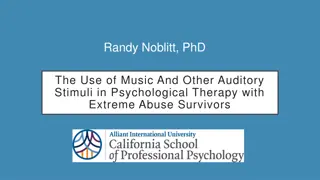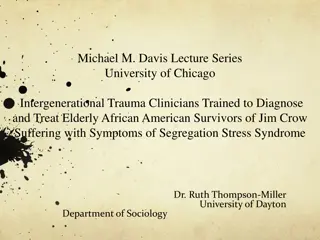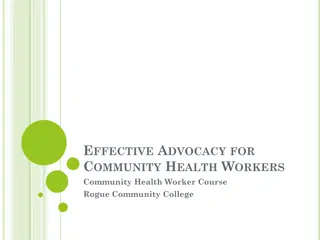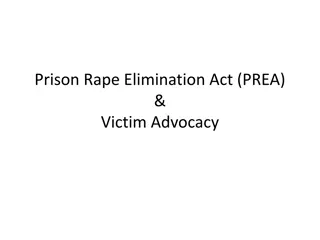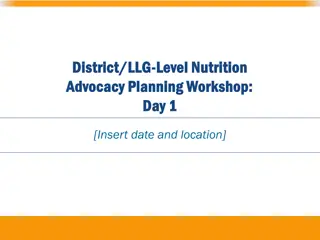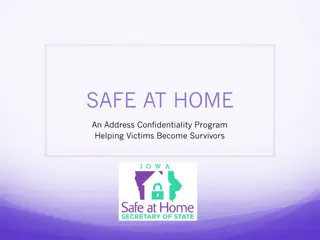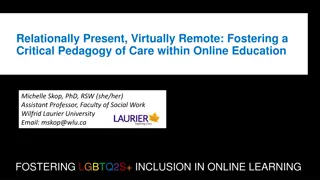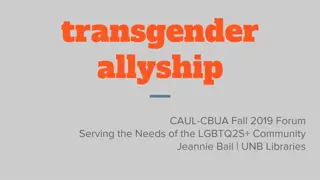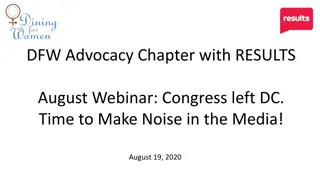Supporting LGBTQ2S Survivors in Advocacy
This content presents information from the Minnesota Indian Women's Sexual Assault Coalition about preparing advocates to provide inclusive advocacy for LGBTQ2S survivors. It covers learning objectives, historical context, areas of focus like building spaces and policies, and strategies for creating welcoming environments. The importance of policies and procedures that affirm access to services, anti-discrimination, and gender inclusivity is emphasized.
Download Presentation

Please find below an Image/Link to download the presentation.
The content on the website is provided AS IS for your information and personal use only. It may not be sold, licensed, or shared on other websites without obtaining consent from the author.If you encounter any issues during the download, it is possible that the publisher has removed the file from their server.
You are allowed to download the files provided on this website for personal or commercial use, subject to the condition that they are used lawfully. All files are the property of their respective owners.
The content on the website is provided AS IS for your information and personal use only. It may not be sold, licensed, or shared on other websites without obtaining consent from the author.
E N D
Presentation Transcript
Minnesota Indian Womens Sexual Assault Coalition Responding to LGBTQ2S Survivors TSASP CONNECT AND REFLECT WEBINAR MARCH 12, 2020 Amanda Watson
Goal and Objectives Goal: To prepare new advocates and volunteers to provide effective and inclusive advocacy for LGBTQ2S (Lesbian, Gay, Bisexual, Transgender, Questioning/Queer, Two Spirit) Survivors. Learning Objectives: Become familiar with best practices for providing inclusive and affirming services to LGBTQ2S survivors Honor the history of LGBTQ2S people in Indian Country Identify unique barriers to safety for LGBTQ2S survivors Identify effective advocacy strategies for LGBTQ2S survivors of sexual violence
Areas to Focus On: 1. Building and Physical Spaces 2. Policies and Procedures 3. Services Offered 4. Outside Partners
1. Building and Physical Space Imagine you walk into a new office building. What are the first things you notice? What makes you feel welcome? Are there any red flags you pay attention to? Now imagine you re going to this office because you need them to help you with something (healthcare, advocacy, legal, etc.). Are there other things you pay attention to? What things might you notice that would make you feel confident that you would be treated with respect?
Making Your Space Welcoming for LGBTQ2S Survivors: Bathrooms Signage/brochures/posters Registration or intake forms Other visible signs you work with LGBTQ2S survivors
2. Policies and Procedures Clarify and affirm access to services. Ensure anti-discrimination policies include sexual orientation and gender identity. Update language in policies so that they are gender neutral. Establish protocol for addressing problematic behavior/language (for staff and survivors).
Policies and Procedures A recipient may not make a determination about services for one [survivor] based on the complaints of another [survivor] when those complaints are based on gender identity. U.S. Department of Justice, 2014 MIWSAC 2020
3. Direct Services Staff training: Familiarity with terminology. Understanding of unique issues LGBTQ2S survivors face. Clear expectations for respectful interactions with LGBTQ2S survivors. Guidance around addressing conflict between survivors on the basis of gender identity or sexual orientation. Provide training opportunities at least once a year.
Helpful Terminology Two Spirit Gay Lesbian Bisexual Transgender Queer Pansexual Questioning Asexual Aromantic Genderqueer Nonbinary Gender non- conforming Cisgender Intersex And many more .
Gender Pronouns Ask how survivors would like to be addressed!
4. Ensuring Outside Partners are Inclusive Meet with healthcare providers and SANEs to learn about their training and see whether they feel confident and comfortable working with LGBTQ2S individuals. Verify tribal codes and other applicable laws are inclusive of violence against LGBTQ2S survivors. Strategize with judges, prosecutors, etc. ahead of time about how to respectfully work with transgender survivors.
Ensuring Outside Partners are Inclusive Meet with law enforcement to understand how their training and policies guide their work with LGBTQ2S survivors. Discuss how law enforcement would document a transgender or nonbinary survivor in their reports. Check with mental health practitioners in your area to see if any have experience working with LGBTQ2S individuals.
Advocate Response: You work at the shelter as an advocate. Alisha is a trans woman who is staying at the shelter, and you think everything is going well. One day you re facilitating a support group, and you overhear some of the other survivors talking meanly about Alisha, misgendering her (using he/him pronouns), talking about how Alisha is secretly a man, and threatening to go beat her up because they don t want someone like that around their kids. What do you do? Are there any policies that would help guide your response? What happens if you try to talk to them, but they continue harassing Alisha? What could be done to try to prevent situations like this from escalating or happening in the first place?
Remember: Your efforts to make your agency inclusive for LGBTQ2S survivors should include a comprehensive look at their needs and your advocacy.
Minnesota Indian Womens Sexual Assault Coalition Contact Information Amanda Watson ajwatson2015@gmail.com 1619 Dayton Ave, Suite 202* St. Paul, MN 55104 Tel 651-646-4800 | www.miwsac.org This project was supported by Grant No. 2017-TA-AX-K025 awarded by the Office on Violence Against Women, U.S. Department of Justice. The opinions, findings, conclusions, and recommendations expressed during the meeting do not necessarily represent the official position or policies of the U.S. Department of Justice, Office on Violence Against Women.
